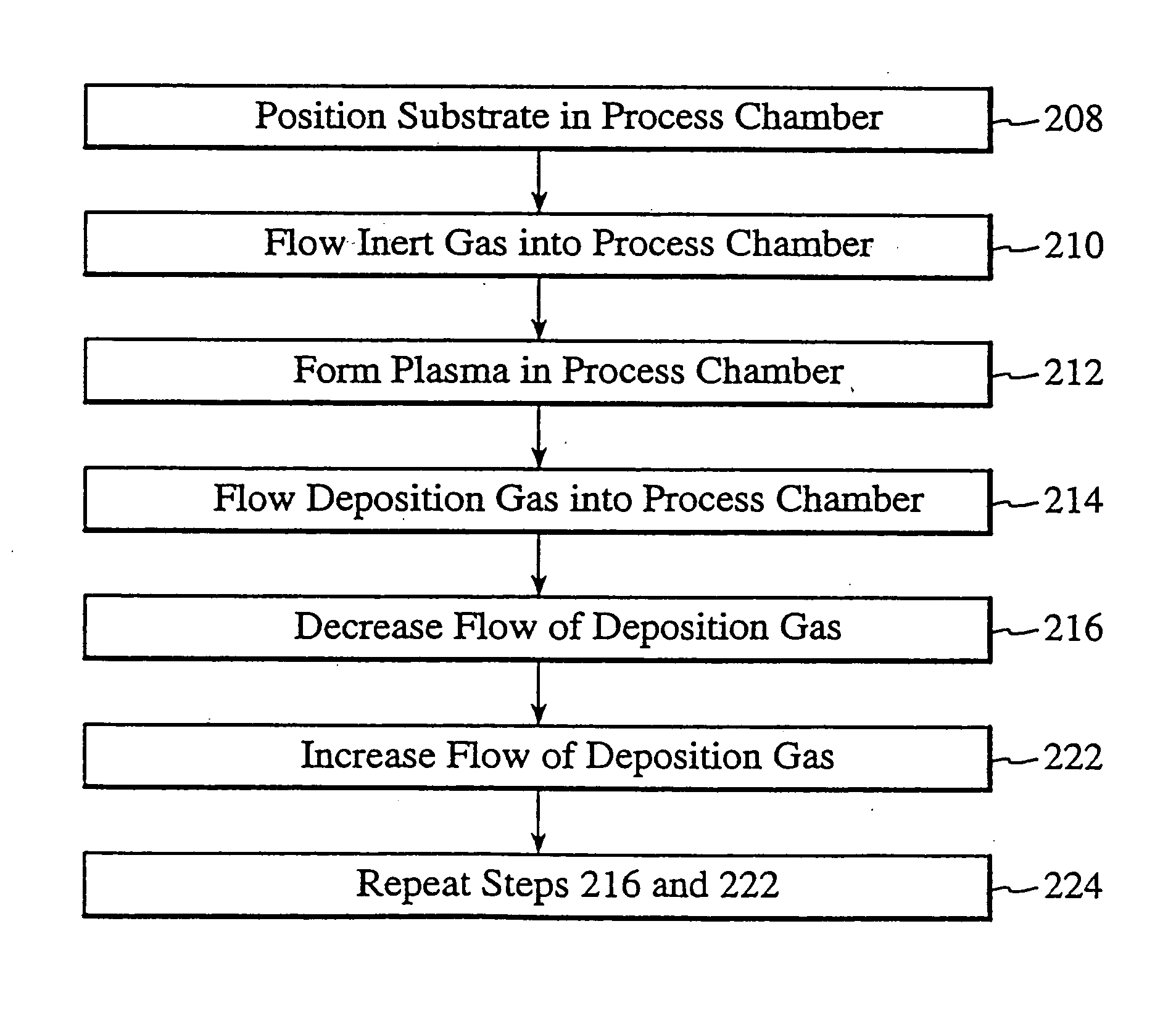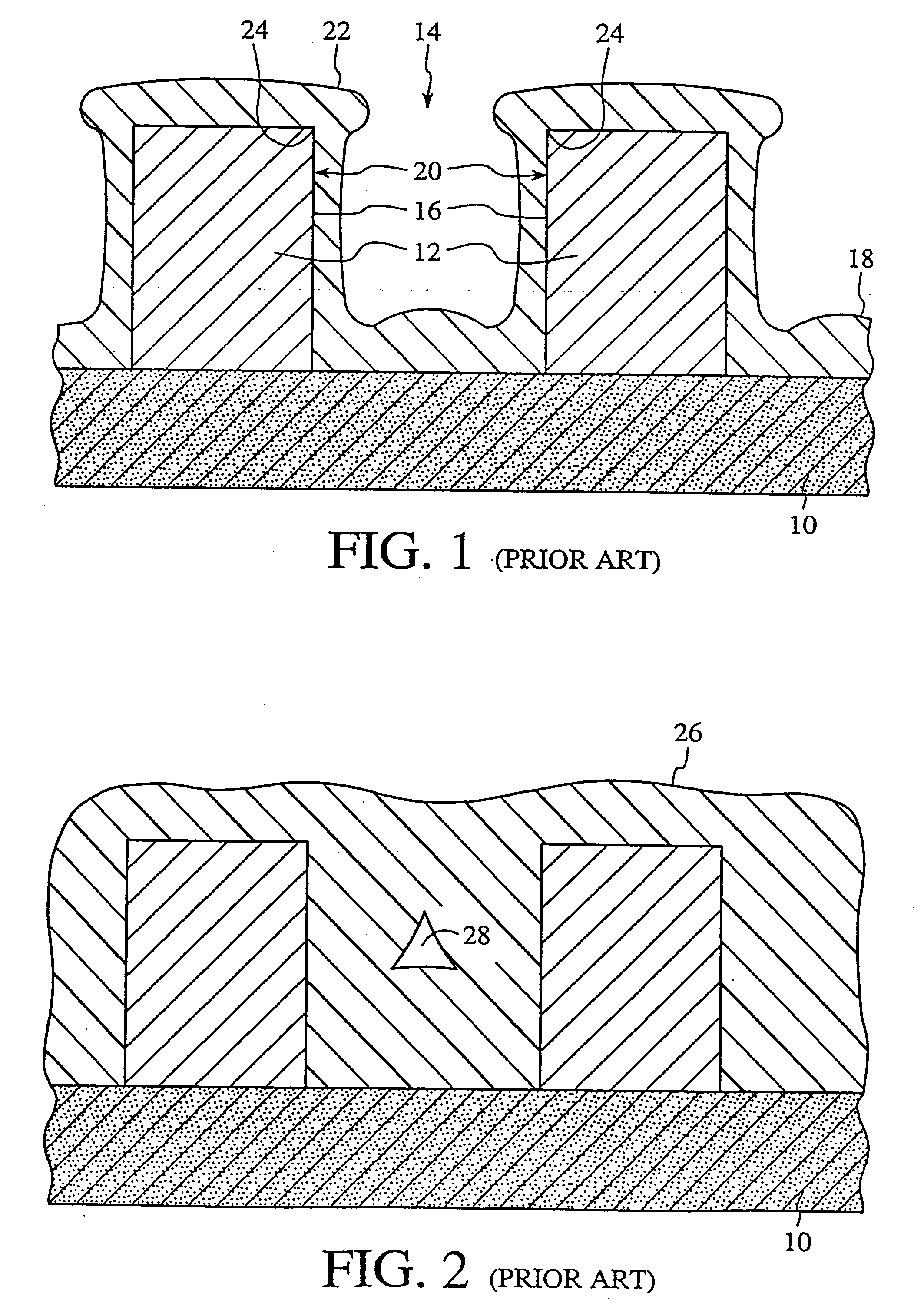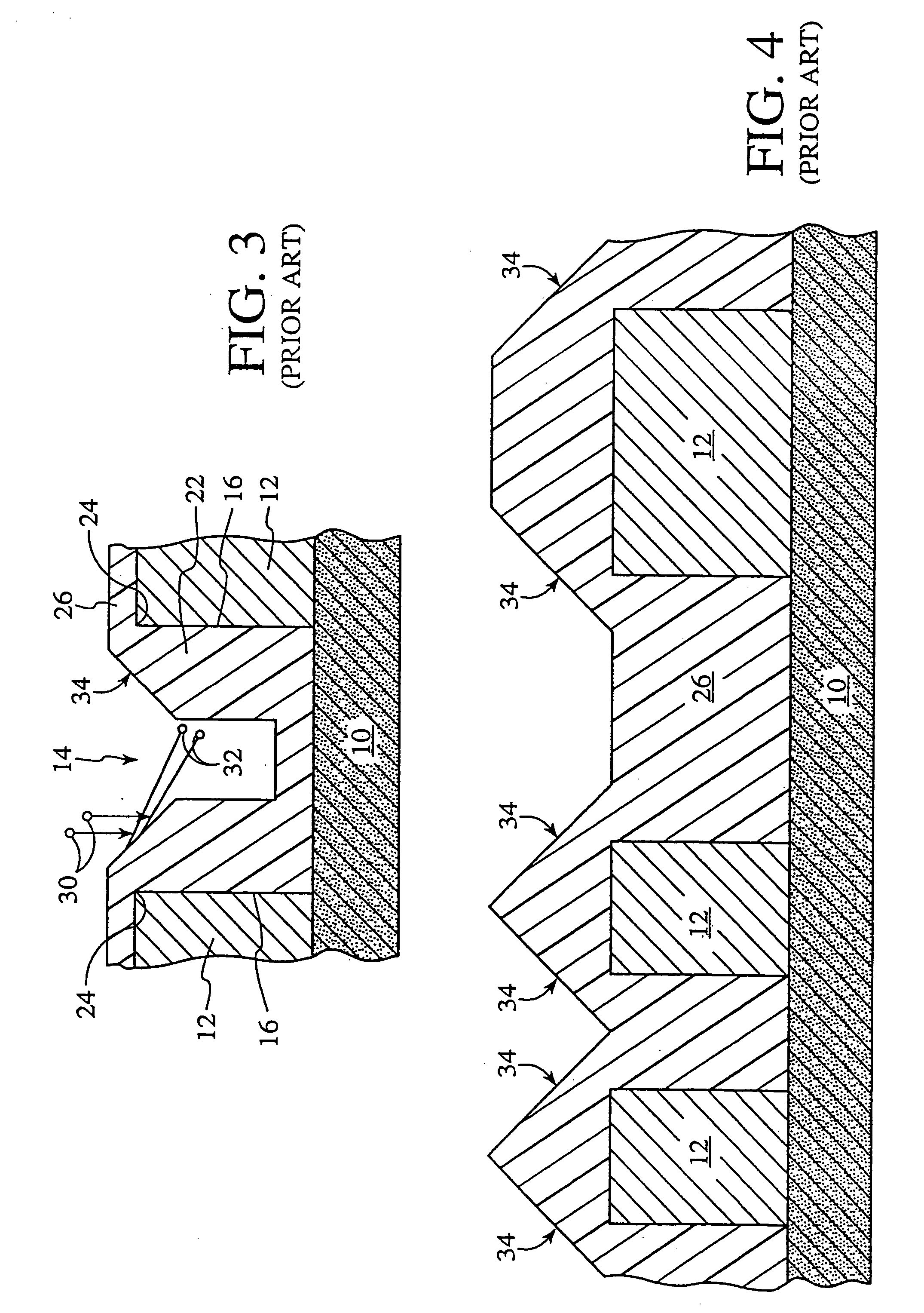Staggered in-situ deposition and etching of a dielectric layer for HDP CVD
a dielectric layer and insitu deposition technology, applied in the direction of resistive material coating, superimposed coating process, liquid/solution decomposition chemical coating, etc., can solve the problem of difficult to completely fill the gap between adjacent conductive lines, the interior void 28 may be problematic for device fabrication, operation, reliability, etc., and the deposition rate available using conventional plasma cvd processes is still relatively low. , to achieve the effect of increasing the deposition rate of the conformal di
- Summary
- Abstract
- Description
- Claims
- Application Information
AI Technical Summary
Benefits of technology
Problems solved by technology
Method used
Image
Examples
Embodiment Construction
I. Introduction
In one embodiment, a conformal dielectric layer formed from silicon dioxide is deposited on a stepped substrate employing a standard HDP-CVD system. A high deposition rate is achieved by selectively reducing the flow of deposition gases into a process chamber where a substrate having a stepped surface to be covered by the conformal dielectric layer is disposed. By selectively reducing the flow of deposition gases into the process chamber, the concentration of a sputtering gas, typically comprising argon, in the process chamber is increased without increasing the pressure therein. In this fashion, the etch rate of the conformal dielectric layer, having superior gap-filling characteristics, may be greatly increased to allow an increase in the deposition rate of the same, while maintaining a suitable dep-etch ratio.
II. An Exemplary CVD System
FIG. 5 illustrates one embodiment of a HDP-CVD system 36, in which a dielectric layer according to the present invention can be...
PUM
| Property | Measurement | Unit |
|---|---|---|
| pressure | aaaaa | aaaaa |
| pressure | aaaaa | aaaaa |
| size | aaaaa | aaaaa |
Abstract
Description
Claims
Application Information
 Login to View More
Login to View More - R&D
- Intellectual Property
- Life Sciences
- Materials
- Tech Scout
- Unparalleled Data Quality
- Higher Quality Content
- 60% Fewer Hallucinations
Browse by: Latest US Patents, China's latest patents, Technical Efficacy Thesaurus, Application Domain, Technology Topic, Popular Technical Reports.
© 2025 PatSnap. All rights reserved.Legal|Privacy policy|Modern Slavery Act Transparency Statement|Sitemap|About US| Contact US: help@patsnap.com



